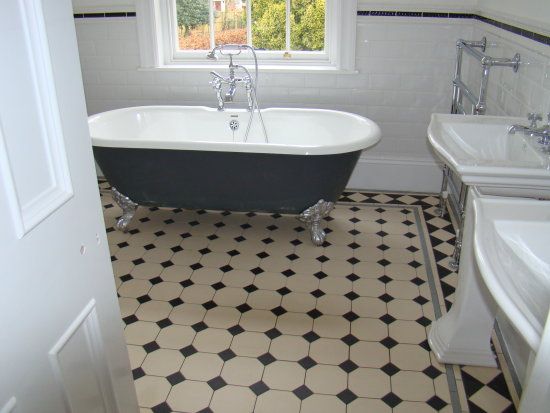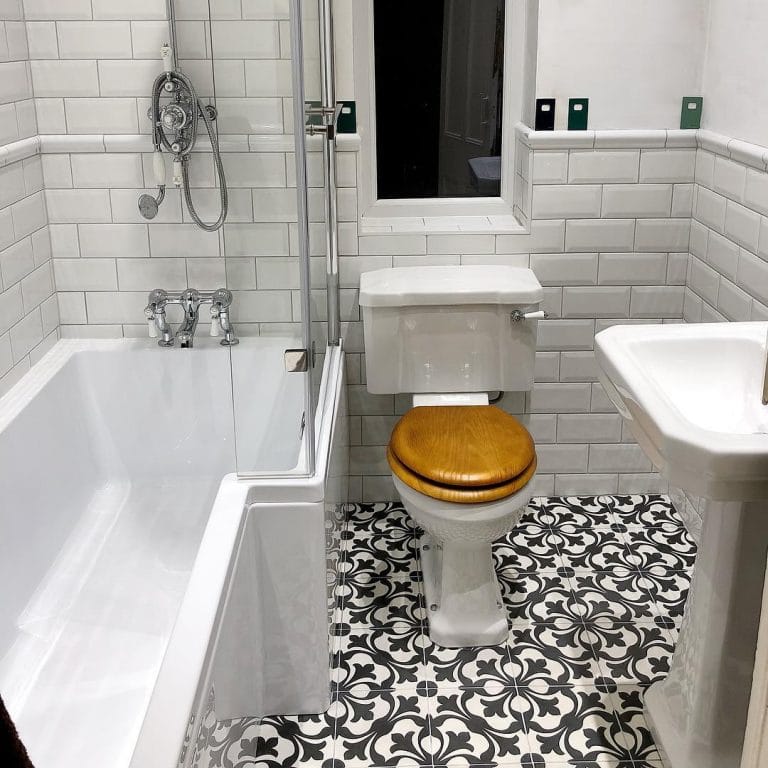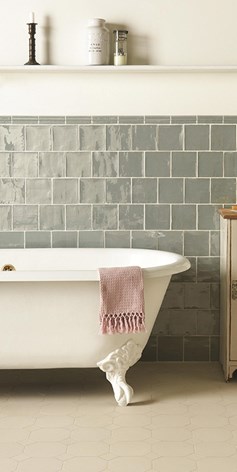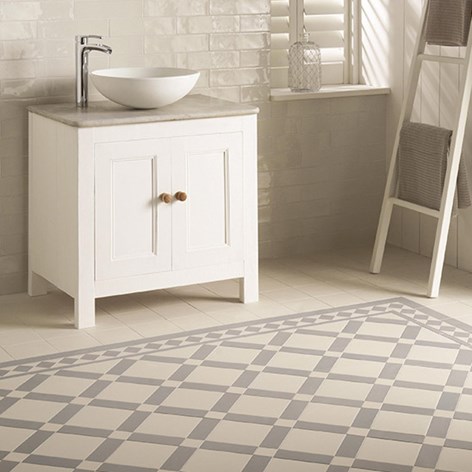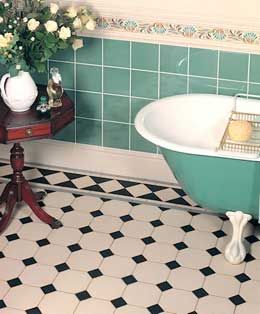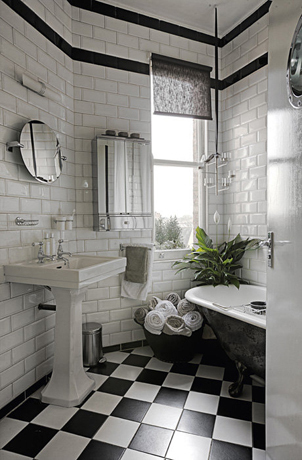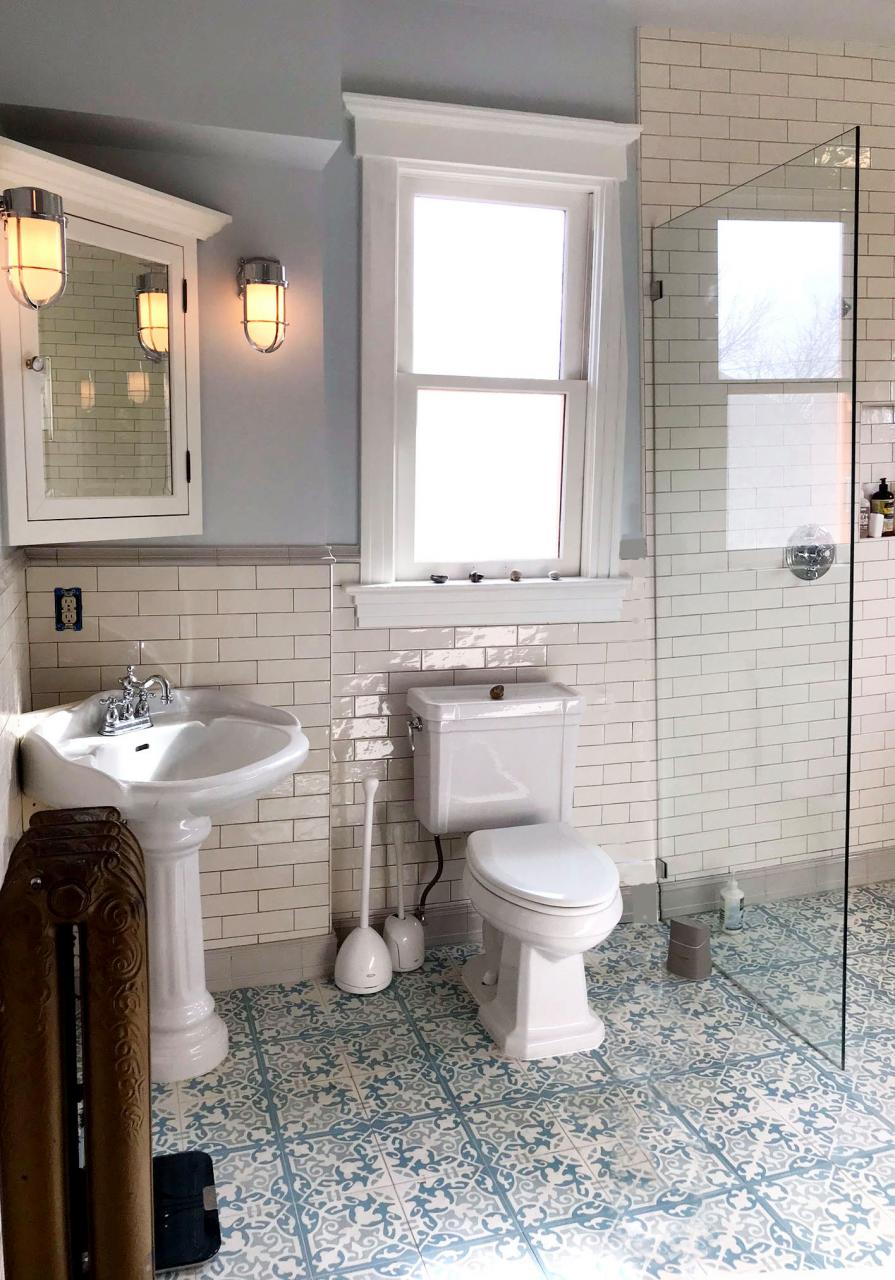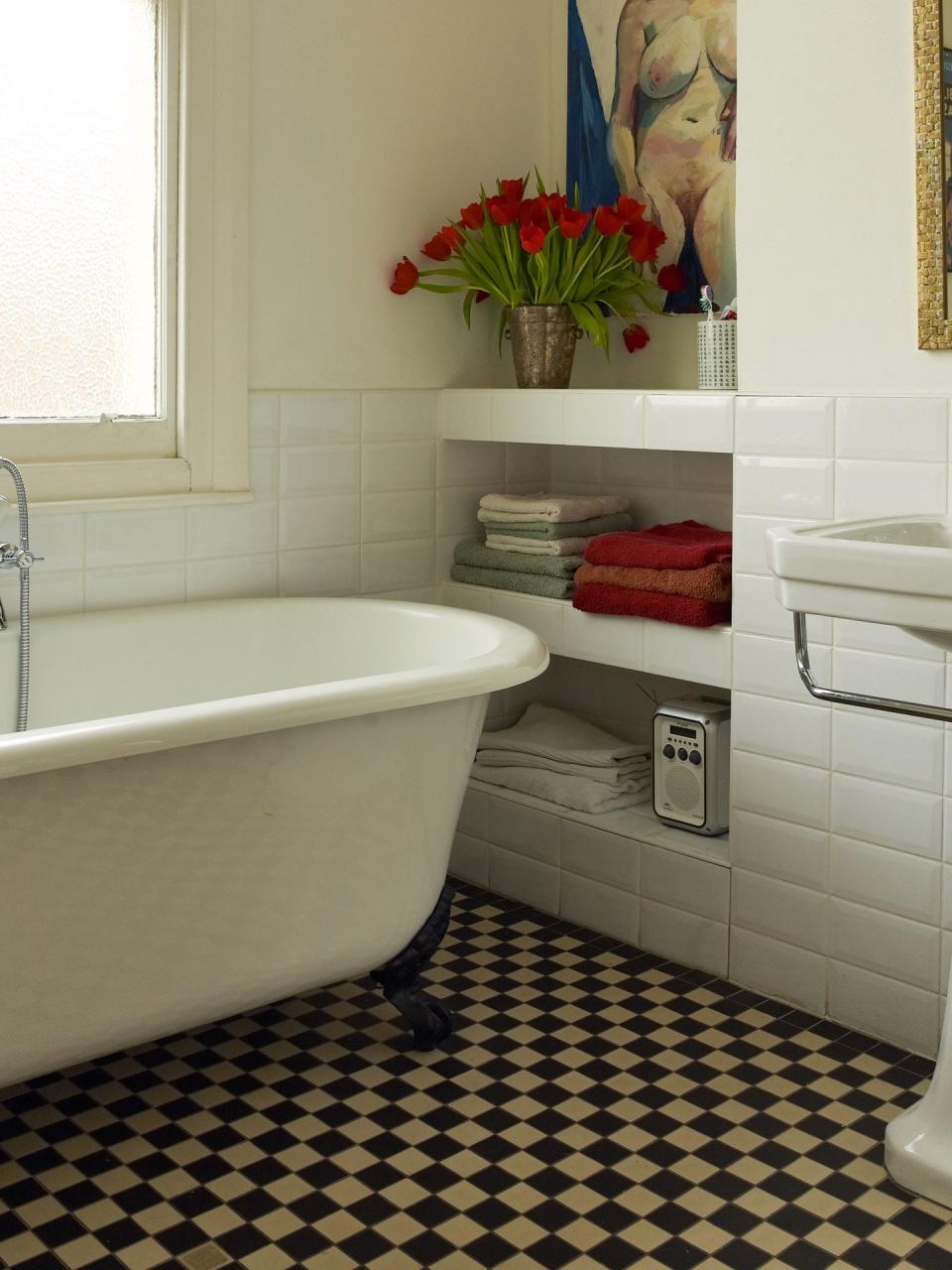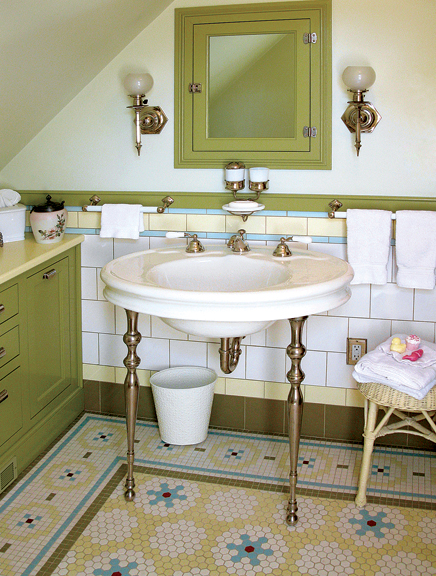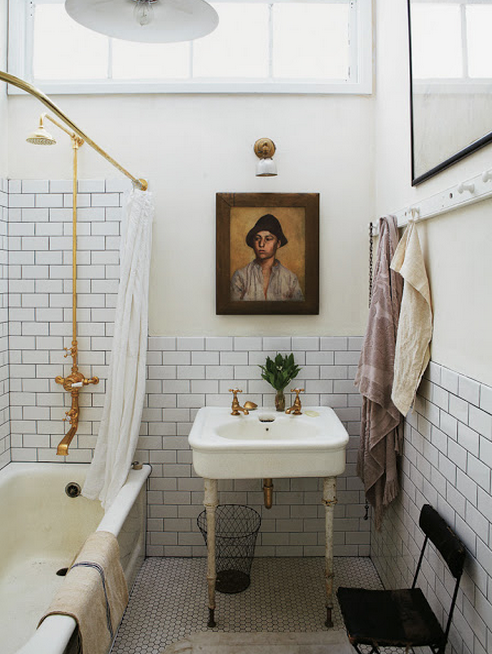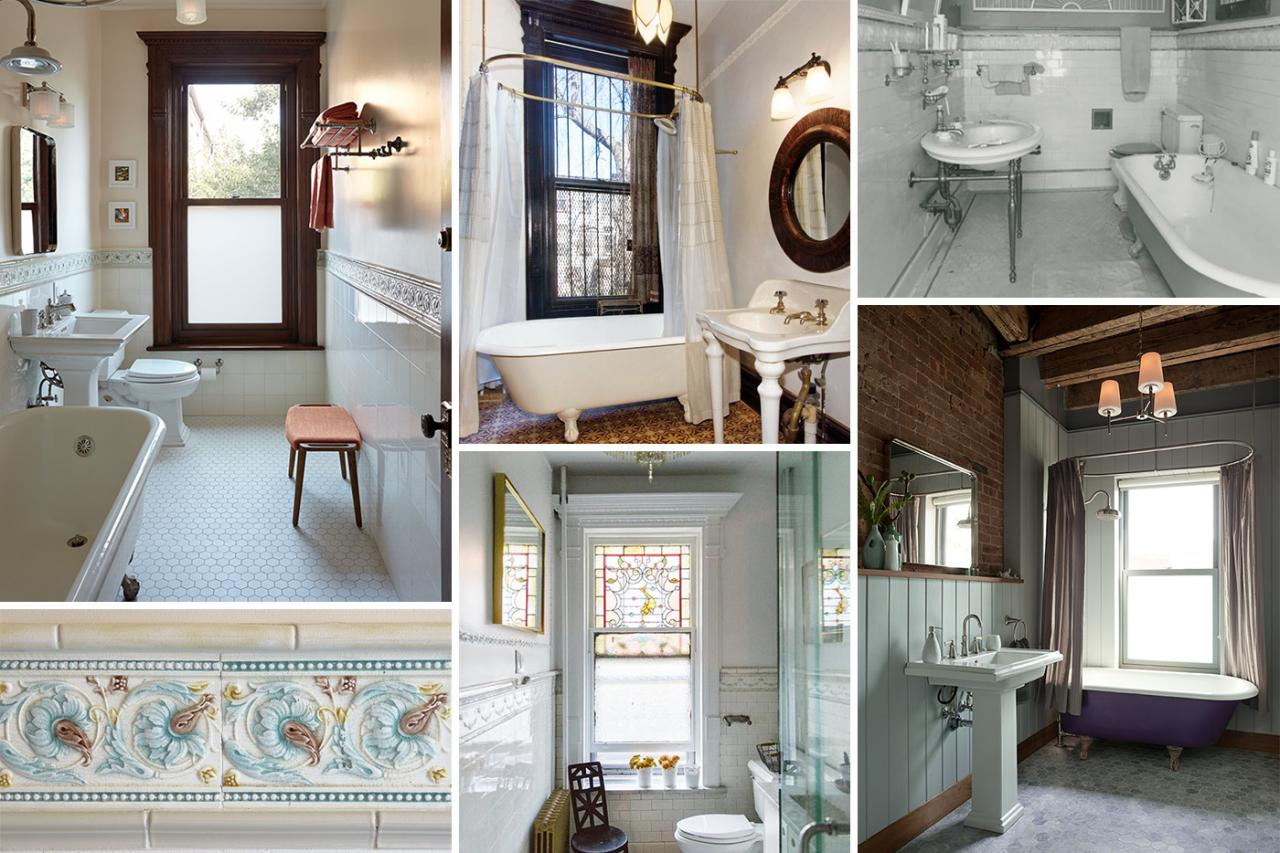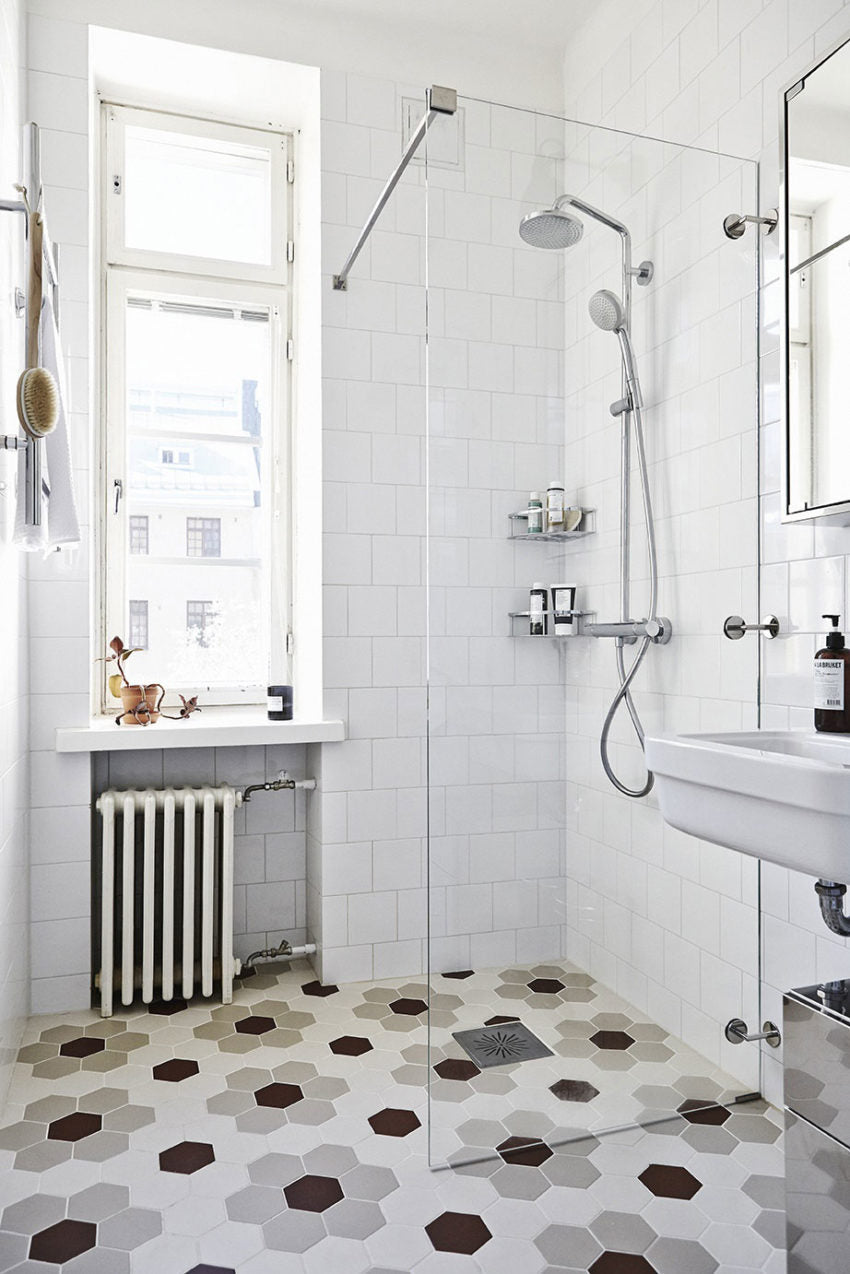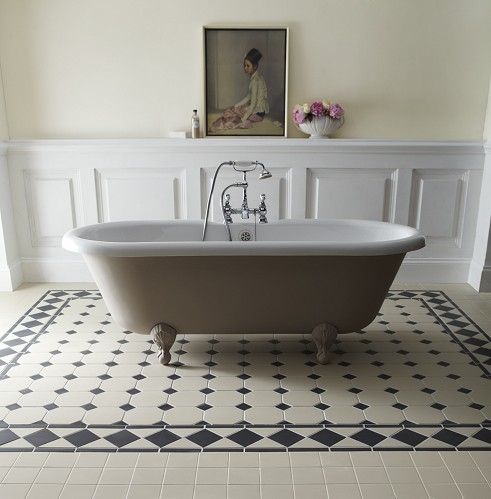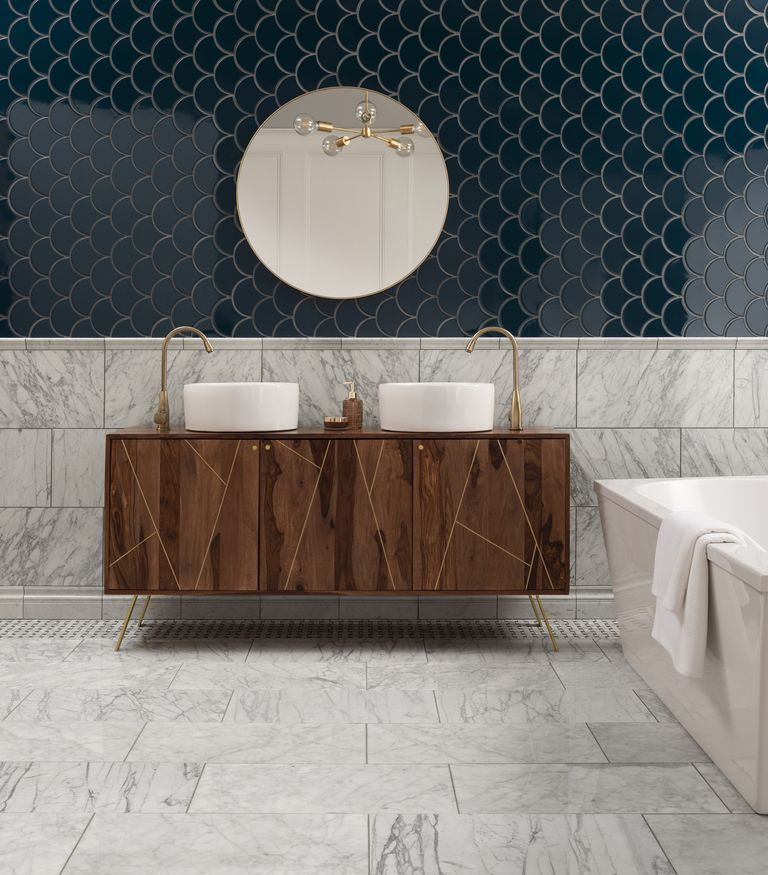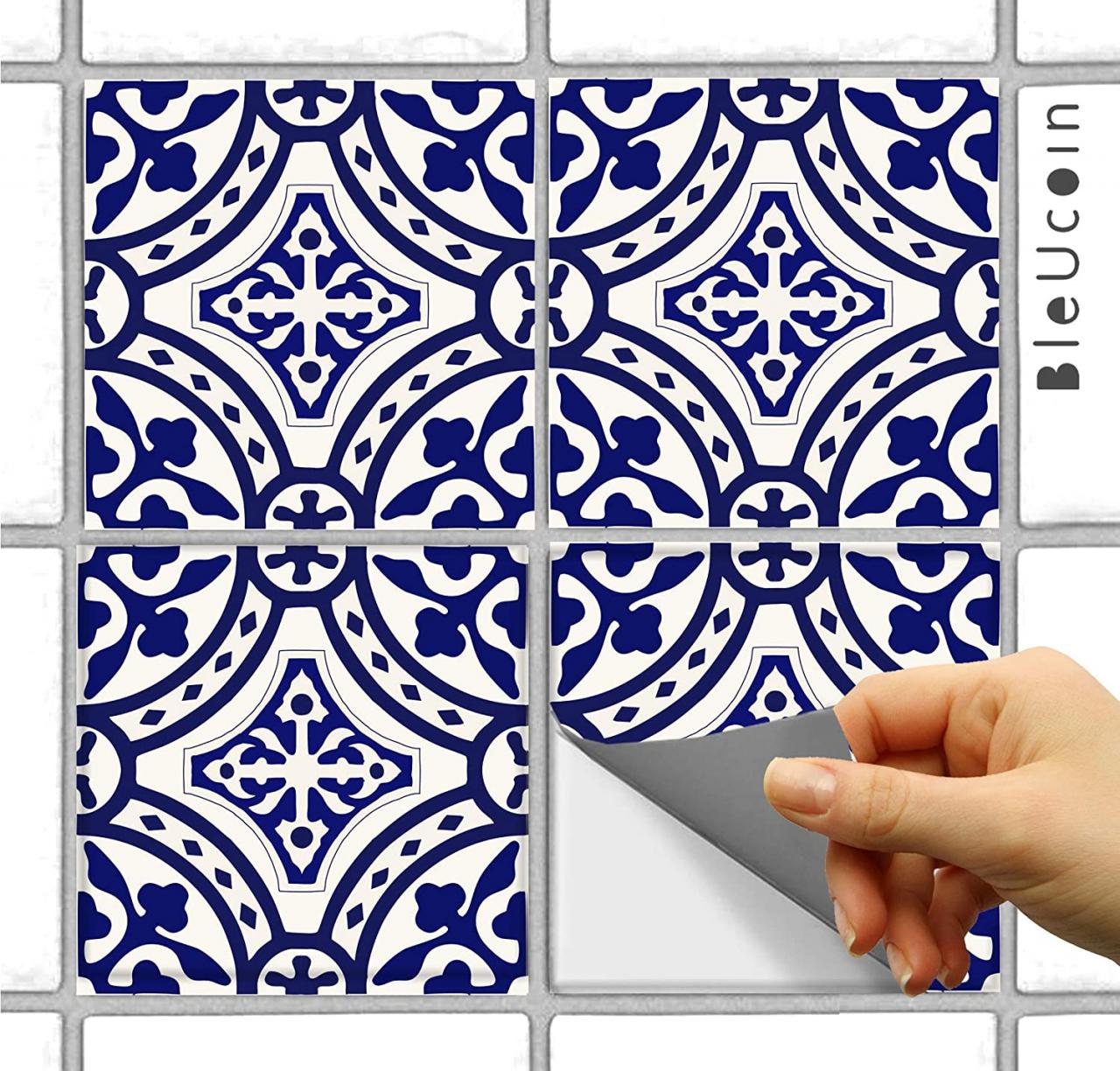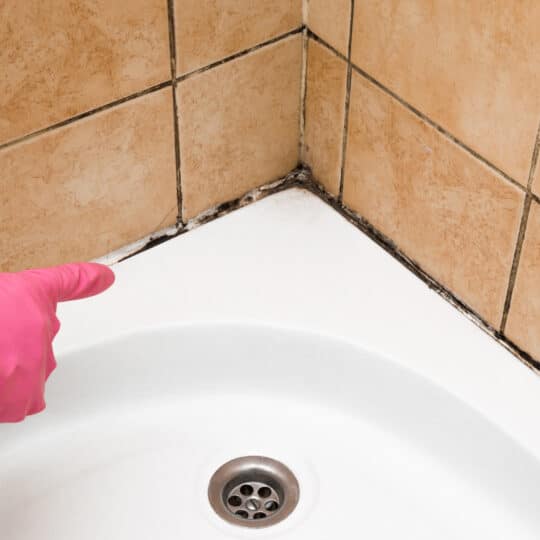Introducing Victorian Bathroom Tile Designs
Victorian bathroom tile designs are a hallmark of elegance and intricate craftsmanship that reflect a bygone era. These designs, which originated during Queen Victoria’s reign from 1837 to 1901, continue to influence contemporary interior design with their timeless appeal. Let’s discuss the enchanting world of Victorian bathroom tile designs and explore what makes them so special.
- Classic Elegance: Victorian bathroom tiles are renowned for their classic elegance. The designs often feature intricate patterns, including floral motifs, geometric shapes, and stylized borders. These tiles were not only functional but also served as decorative art pieces, adding a touch of sophistication to bathrooms.
- Rich History: The use of tiles in Victorian bathrooms was more than just a trend; it was a reflection of the era’s technological advancements and artistic movements. The Industrial Revolution made mass production of tiles possible, leading to widespread use in homes. This period also saw a fascination with medieval and Renaissance art, which heavily influenced tile designs.
- Materials and Craftsmanship: Victorian tiles were typically made from ceramic, porcelain, or encaustic materials. Encaustic tiles, in particular, are known for their durability and vibrant colors, which are achieved through a unique process of embedding colored clay into the tile’s surface. This meticulous craftsmanship ensured that the tiles could withstand the test of time.
- Symbolism and Meaning: Many Victorian tile designs incorporated symbolic elements. For example, the use of flowers like roses and lilies often represented purity and beauty, while geometric patterns could symbolize order and balance. These symbolic meanings added a deeper layer of significance to the bathroom decor.
- Aesthetic Appeal: The aesthetic appeal of Victorian bathroom tiles lies in their ability to create a cohesive and harmonious look. The combination of colors, patterns, and textures can transform a simple bathroom into a luxurious retreat. The tiles were often used on walls, floors, and even ceilings to create a fully immersive experience.
- Modern Revival: In recent years, there has been a resurgence in the popularity of Victorian bathroom tile designs. Homeowners and interior designers are drawn to the timeless beauty and historical significance of these tiles. By incorporating Victorian elements into modern bathrooms, one can achieve a unique blend of old-world charm and contemporary functionality.
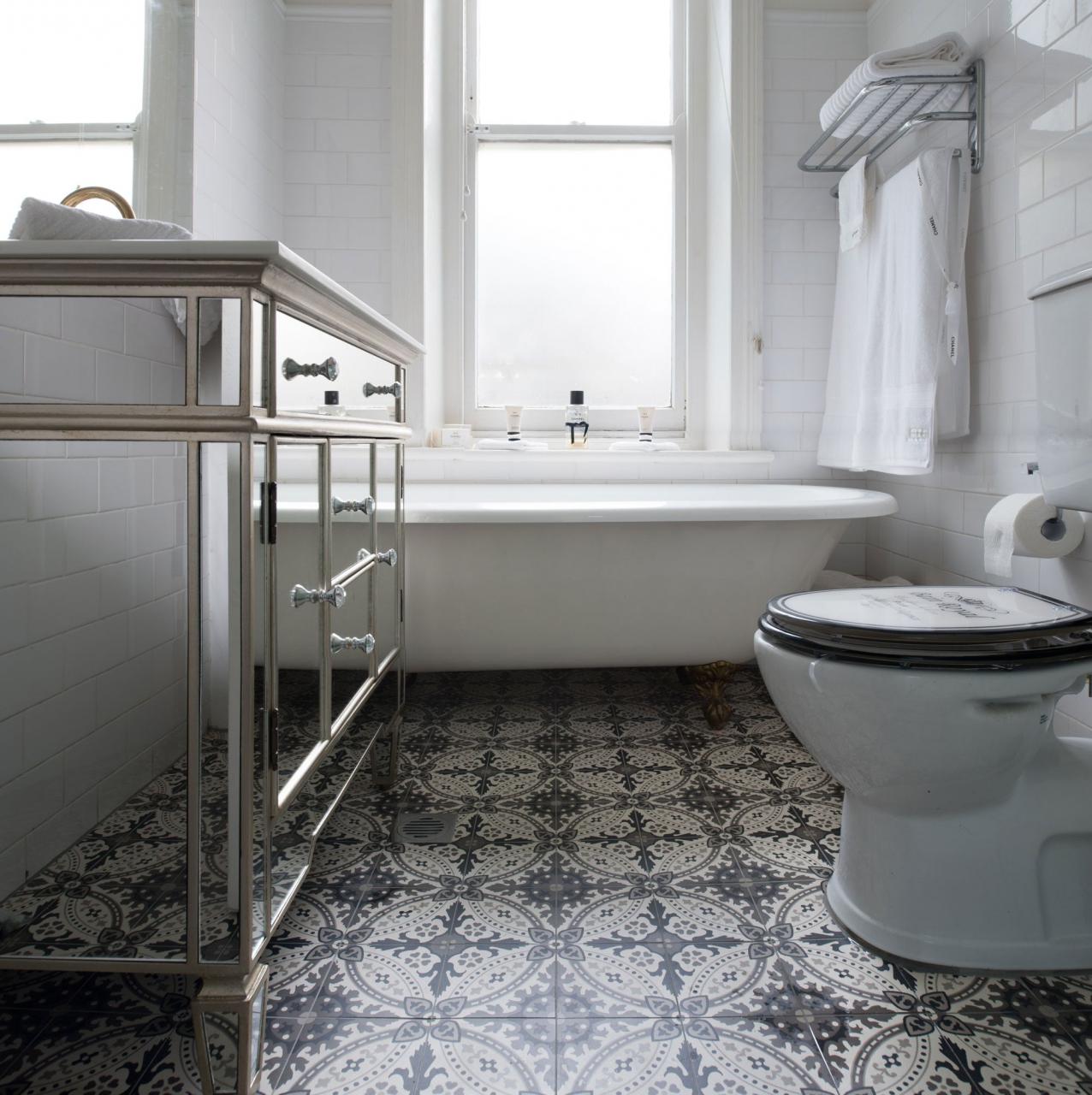
Historical Significance and Evolution of Victorian Tiles
The Victorian era was a time of great change and innovation, and this was reflected in the evolution of bathroom tiles. Understanding the historical significance of Victorian tiles provides insight into the cultural and technological advancements of the time.
Early Innovations: The early Victorian period saw the introduction of new manufacturing techniques that revolutionized tile production. The development of the dust-press method allowed for the creation of more intricate designs and patterns, making tiles more accessible to the middle class.
Influence of Art Movements: The Victorian era was heavily influenced by various art movements, including the Gothic Revival, the Arts and Crafts Movement, and the Aesthetic Movement. These influences were evident in the design of bathroom tiles, which often featured elements like Gothic arches, intricate floral patterns, and stylized motifs.
Technological Advancements: The Industrial Revolution played a crucial role in the evolution of Victorian tiles. Advances in manufacturing technology made it possible to produce tiles in large quantities, reducing costs and making them more affordable. This democratization of design meant that beautiful, high-quality tiles were no longer exclusive to the wealthy.
Cultural Significance: Victorian tiles were more than just decorative elements; they were a reflection of the era’s values and ideals. The emphasis on cleanliness and hygiene during this period led to the widespread use of tiles in bathrooms and kitchens. The ease of cleaning tiled surfaces made them a practical choice for these spaces.
Architectural Integration: The use of tiles extended beyond bathrooms and kitchens. Victorian tiles were often used in hallways, fireplaces, and even exterior facades. The versatility of tiles allowed architects and designers to create cohesive and visually appealing interiors and exteriors.
Legacy and Influence: The legacy of Victorian tiles can still be seen today in many historical buildings and homes. Their enduring popularity is a testament to their timeless beauty and functional design. Modern reproductions of Victorian tiles continue to pay homage to this rich heritage, allowing homeowners to incorporate a piece of history into their own spaces.
Popular Victorian Tile Patterns and Layouts
Victorian bathroom tiles are celebrated for their intricate patterns and innovative layouts. These designs were not only aesthetically pleasing but also showcased the craftsmanship and creativity of the era. Here, we explore some of the most popular Victorian tile patterns and layouts that have stood the test of time.
Geometric Patterns: Geometric patterns were a hallmark of Victorian tile design. Common patterns included hexagons, diamonds, and squares arranged in intricate, repeating sequences. These geometric designs created a sense of order and symmetry, making them a popular choice for both floors and walls.
Mosaic Tiles: Mosaic tiles are another popular feature in Victorian bathrooms. These small, intricately designed tiles were often used to create elaborate scenes or decorative borders. The use of different colors and shapes allowed for endless design possibilities, making each mosaic a unique work of art.
Floral Motifs: Floral motifs were a staple of Victorian tile design. Tiles featuring flowers, leaves, and vines were commonly used to add a touch of nature to indoor spaces. These designs ranged from simple, single-flower patterns to complex, multi-flower arrangements, often with a highly detailed and realistic look.
Border Tiles: Border tiles were used to frame larger tile patterns or to create a visual break between different sections of a wall or floor. These tiles often featured intricate designs and were available in a variety of colors and shapes. Border tiles added a finishing touch to the overall design, enhancing the aesthetic appeal of the space.
Checkerboard Patterns: The classic checkerboard pattern was a popular choice for Victorian bathroom floors. This simple yet elegant design typically used contrasting colors, such as black and white, to create a bold, graphic look. The checkerboard pattern is still popular today for its timeless appeal and versatility.
Encaustic Tiles: Encaustic tiles, with their rich colors and intricate designs, were a prominent feature in Victorian bathrooms. These tiles were made using a process that involved embedding different colored clays into the surface of the tile, creating a durable and vibrant design. Encaustic tiles were often used to create elaborate patterns and were a testament to the craftsmanship of the era.
Color Schemes and Materials in Victorian Bathrooms
The color schemes and materials used in Victorian bathrooms played a crucial role in defining the overall aesthetic and functionality of the space. The combination of rich colors, quality materials, and meticulous craftsmanship created bathrooms that were both beautiful and practical.
Rich Color Palettes: Victorian bathroom tiles often feature rich and vibrant color palettes. Deep blues, greens, reds, and gold were commonly used to create a luxurious and opulent look. These colors were often combined in intricate patterns, adding depth and visual interest to the space.
Natural Materials: The use of natural materials was a key characteristic of Victorian bathroom design. Ceramic and porcelain tiles were popular choices due to their durability and water resistance. Marble was also commonly used for countertops and flooring, adding a touch of elegance and sophistication.
Encaustic Tiles: As mentioned earlier, encaustic tiles were a prominent feature in Victorian bathrooms. These tiles were made using a unique process that involved embedding different colored clays into the surface of the tile. The result was a durable and vibrant design that added a touch of artistry to the bathroom.
Glossy Finishes: Glossy finishes were popular in Victorian bathroom tiles, reflecting the era’s emphasis on cleanliness and hygiene. The glossy surface made the tiles easy to clean and maintain, ensuring that the bathroom always looked pristine. This practical aspect was just as important as the aesthetic appeal.
Contrasting Combinations: The use of contrasting colors and materials was a common design technique in Victorian bathrooms. For example, a combination of dark and light tiles could be used to create a striking checkerboard pattern on the floor. This contrast added visual interest and helped to define different areas within the bathroom.
Decorative Accents: Decorative accents, such as gold or silver leaf, were often used to enhance the overall design of Victorian bathroom tiles. These accents added a touch of luxury and refinement, making the bathroom feel like a special and carefully curated space. Decorative tiles were often used as focal points or to highlight specific areas.
Incorporating Victorian Tiles in Modern Bathrooms
Incorporating Victorian tiles into modern bathrooms can create a unique and stylish space that combines the best of both worlds. By blending old-world charm with contemporary functionality, you can achieve a look that is both timeless and fresh.
Mixing Old and New: One of the key strategies for incorporating Victorian tiles into modern bathrooms is to mix old and new elements. For example, you can pair Victorian floor tiles with sleek, modern fixtures and fittings. This contrast creates a dynamic and visually interesting space that feels both nostalgic and contemporary.
Feature Walls: Creating a feature wall with Victorian tiles is a great way to make a statement in your bathroom. Choose a wall, such as the one behind the bathtub or vanity, and cover it with intricately patterned Victorian tiles. This focal point will draw the eye and add a touch of elegance to the room.
Accent Tiles: Using Victorian tiles as accents is another effective way to incorporate them into a modern bathroom. For example, you could use Victorian tiles as a border around a mirror or as a backsplash behind the sink. These small touches can add character and charm without overwhelming the space.
Contrasting Floors and Walls: Consider using Victorian tiles on the floor and pairing them with modern, neutral walls. This combination allows the intricate tile patterns to stand out while maintaining a clean and contemporary overall look. You can also reverse this approach by using modern tiles on the floor and Victorian tiles on the walls.
Mixing Patterns and Textures: Don’t be afraid to mix different patterns and textures when incorporating Victorian tiles into your bathroom. For example, you could combine geometric floor tiles with floral wall tiles to create a rich and layered look. Mixing patterns and textures adds depth and interest to the space.
Balancing Color Schemes: When using Victorian tiles, it’s important to balance the color scheme to avoid overwhelming the space. Choose a dominant color from the tiles and use it as a guide for selecting other elements in the bathroom, such as paint, accessories, and textiles. This approach ensures a cohesive and harmonious look.
Maintenance and Preservation of Victorian Tilework
Maintaining and preserving Victorian tilework requires careful attention to detail and a commitment to using appropriate cleaning and repair techniques. With the right care, these beautiful tiles can continue to enhance your bathroom for years to come.
Regular Cleaning: Regular cleaning is essential to keep Victorian tiles looking their best. Use a mild, non-abrasive cleaner and a soft cloth or sponge to gently clean the tiles. Avoid harsh chemicals and abrasive materials, as these can damage the tiles’ surface and diminish their beauty.
Grout Maintenance: The grout between Victorian tiles can become discolored or damaged over time. Regularly inspect the grout and clean it with a gentle grout cleaner. If the grout is cracked or missing, consider re-grouting to maintain the integrity of the tilework and prevent water damage.
Sealing Tiles: Sealing Victorian tiles can help protect them from stains and moisture. Use a high-quality tile sealer appropriate for the type of tile you have. Follow the manufacturer’s instructions for application and reapply the sealer as needed to maintain its protective properties.
Repairing Chips and Cracks: Chips and cracks in Victorian tiles can detract from their beauty and may lead to further damage. For minor chips, use a tile repair kit to fill in the damaged area. For larger cracks, it may be necessary to replace the affected tiles. Consult a professional if you are unsure how to proceed.
Preventive Measures: Taking preventive measures can help preserve Victorian tilework. Use rugs or mats in high-traffic areas to protect the tiles from wear and tear. Avoid placing heavy objects directly on the tiles, and use protective pads under furniture legs to prevent scratching.
Professional Restoration: If your Victorian tilework is significantly damaged or showing signs of aging, consider professional restoration. A restoration specialist can carefully clean, repair, and restore your tiles to their original beauty. This investment can significantly extend the life of your tilework and enhance the overall appearance of your bathroom.
The Reign of the Victorian Bathroom Fireclay Tile
Victorian Ceramic Tile Bathroom Ideas
Victorian Ceramic Bathroom Tiles – Bathroom Design Ideas
Mosaic Floor Tile Patterns for Baths
Tile by Style: The Reign of the Victorian Bathroom Fireclay Tile
Fabulous Victorian Bathrooms Keeping It Old School
Victorian Tiles Style Guide
Buxton Border 10cm Black/White Topps Tiles Victorian bathroom
Related Posts:
